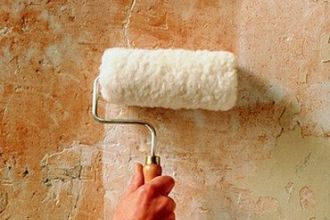How to apply a wall hardener before filing ?

Before applying any filler, paint or other coating to walls or ceilings, it’s important to check the condition of your substrates. If they turn out to be powdery, soft or chalky, you should apply a wall hardener to consolidate the base materials and fix the powdery base. But how can you be sure that your surface needs to be hardened? And how to best apply a hardener for a secure and great quality result? Professional tips for using a Toupret wall hardener…
When to apply a hardener on a wall?
To know if you need to apply Toupret Wall Hardener, you must start by diagnosing the condition of your surface.
Why apply a wall hardener?
For fillers and subsequent coverings to last well and have a good appearance for years to come, the base substrate must be hard, cohesive, clean, sound and dry. You should therefore diagnose your substrates and prepare them accordingly as a first step.
How do I know if I need to apply a hardener?
A plaster that can be marked with a fingernail or a cement that is easily scratched with a screwdriver is considered to be soft. To see if your surface is floury or powdery, simply wipe a hand flat over it. If your hand is covered with a white deposit after the test, your walls need to be treated with a wall hardener.
Which substrates can a hardener be applied to?
Toupret’s Wall Hardener can be applied to all types of dry substrates:
- Plaster and plasterboard;
- Cement, concrete, mortar, brick and stone;
- Terracotta, whitewash or roughcast.
It can be used both outdoors and indoors but should not be exposed to moisture within 3 hours of application.
Tips for using Toupret hardener
Technical conditions for applying the hardener
Ready to use, Toupret wall hardener can be applied by roller, wide brush or spray gun. If using a gun, plan to dilute the product with a mixture of water and alcohol as explained in the technical data sheet.
Whichever application you choose, apply the hardener in an abundant layer, until the substrate is saturated. White when applied to the substrate, the hardener becomes clear and colourless when it dries. For best results, apply the hardener at an ambient temperature between +5°C and +35°C, with a humidity level of less than 80%.
If necessary, you can add a second coat after the first one is dry. The colour of the base substrate tends to intensify slightly after applying the hardener, which allows you to check you have completely covered the area you are treating. After the hardener has completely dried (usually within 24 hours) your surface is stable and sufficiently hard. Cover your treated walls with filler, paint or another wall covering for a guaranteed quality finish.
Safety first
Attention, our wall hardener contains alcohol resins, so please refer to the product’s safety data sheet for precautions for use.
We recommend wearing a mask when sanding and gloves when applying. Also be sure to ensure good ventilation in the room if you are working indoors. Finally, don’t smoke nearby and keep away from naked flames during application.
Toupret offers a wide range of products designed for treating surfaces before filling. In addition to a hardener, you will find Anti-Damp Render, a solution for treating damp surfaces and Anti-Damp Treatment, a special filler for sealing surfaces with damp. Also check out our wood range for our dedicated Wood Hardener. Please contact our technical department to find out more about these solutions.

